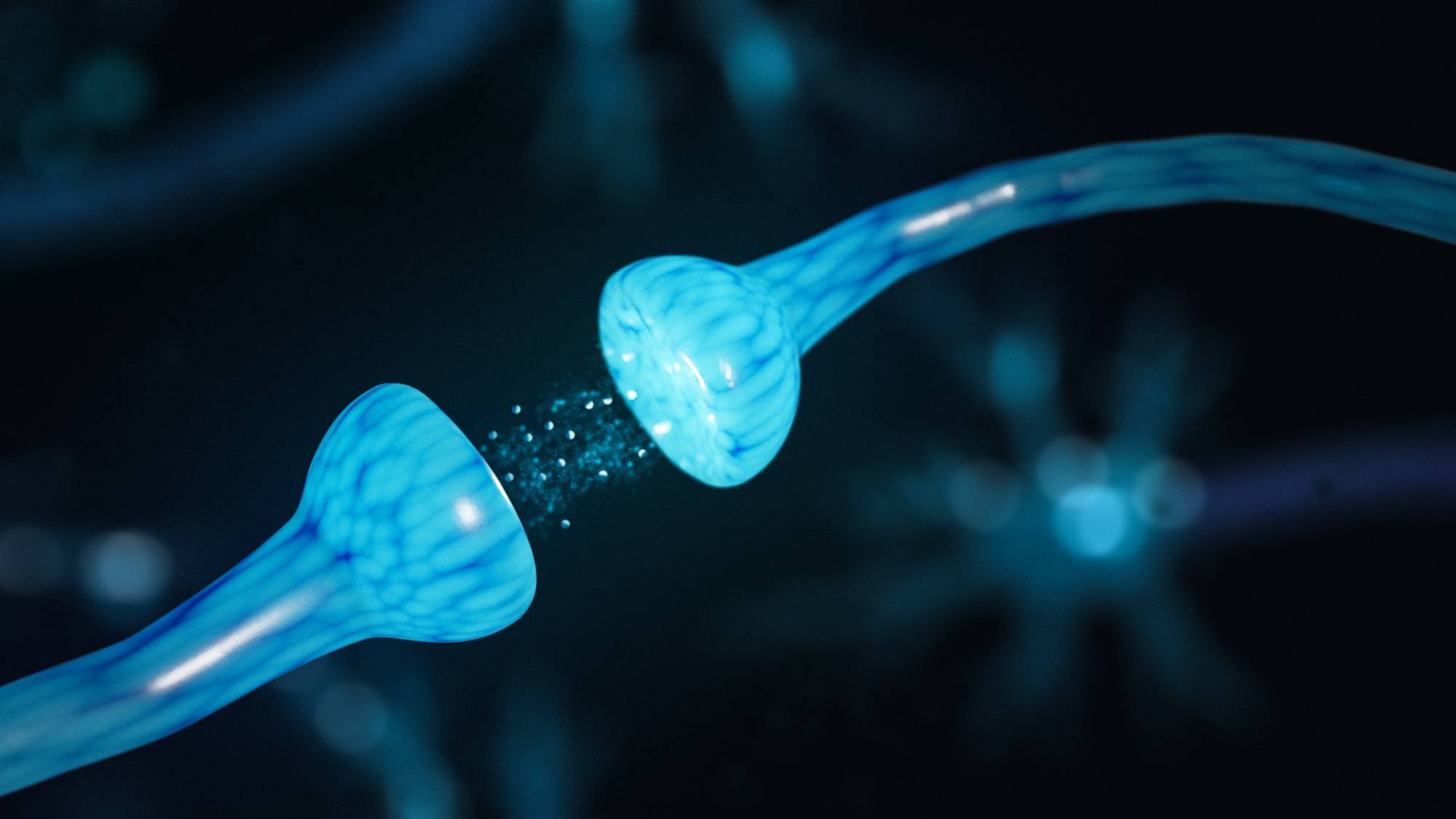
Dexmedetomidine (DEX) is an α2 adrenoceptor agonist that is commonly administered before general anesthesia as a short-term sedative [1–3]. In this setting, dexmedetomidine has several well-studied benefits, most notably a reduction in the need for opioids during surgical procedures while producing sedation and analgesia throughout the entire perioperative period, as well as an elimination of otherwise common post-surgical respiratory depression [1–2]. Patients under the effect of dexmedetomidine retain psychomotor functions without sacrificing comfort, allowing for cooperation and physiological arousal [2]. First approved for ICU use in December 1999 and used at Baylor University Medical Center in August 2000, dexmedetomidine is commonly sold under the trade name Precedex today [2–3].
As an α2 adrenoceptor agonist, dexmedetomidine targets presynaptic receptors in the peripheral and central nervous systems, as well as in platelets, the pancreas, eyes, kidneys, and liver [2]. Via a negative feedback mechanism, this imidazole compound regulates norepinephrine and adenosine triphosphate levels [2]. α2 receptor agonists activate guanine-nucleotide regulatory binding proteins that activate cellular responses through two primary methods: the modulation of ion channel activity or the firing of a second messenger system [2]. The former of these methods produces the hyperpolarization of the cell membrane, facilitating the expulsion of potassium and, consequently, suppressing neuronal activity [2].
Dexmedetomidine differs from other means of sedation because of the combined effects of presynaptic and postsynaptic α2 adrenoceptor activation [2]. Presynaptic activation preserves norepinephrine levels, effectively stifling pain signals, while postsynaptic activation centralized in the central nervous system contributes to reduced sympathetic activity [2]. These two forms of activation enable dexmedetomidine to become a singular source of sedation, anxiolysis, and analgesia [2]. Consequently, some of the challenges associated with the administration of several disparate medications are eliminated [2]. However, despite this knowledge, dexmedetomidine’s analgesic mechanisms are not yet fully understood [4].
In anesthetic contexts, dexmedetomidine can be administered intravenously or intrathecally, although intravenous administration is more common [1]. Numerous studies have revealed that dexmedetomidine can result in as much as a 50% decrease in opioid consumption through the surgical process [4–5]. When managing refractory cancer pain, combined treatments consisting of dexmedetomidine and opioids have even been considered optimal in terms of analgesic effects in comparison to opioid-only treatments [6]. Additional noted effects, including diminished delirium in non-cardiac surgeries in elderly patients [7], improved recovery after laparoscopic colectomy [8], and reduced depression rates following cancer treatment [1], demonstrate the widespread benefits of this agonist.
However, it is important to note the side effects previously observed following dexmedetomidine administration, including hypotension, hypertension, nausea, bradycardia, and dry mouth [2]. These side effects were observed immediately during or following loading; consequently, they can be diminished by controlling the loading dose [2]. Additionally, patients might be afflicted by withdrawal, similar to that associated with clonidine, following treatment [2].
Scientists continue to investigate the power of dexmedetomidine use, particularly concerning its effects on children. A notable recent study [9] demonstrated how dexmedetomidine can reduce inflammatory factors and ameliorate cardiopulmonary bypass-resultant neurodevelopmental damage when treating adolescent congenital heart disease. Another study [10] compared how minimal dosages of dexmedetomidine and midazolam prevented emergency delirium in children following exposure to sevoflurane anesthesia. Although both medications had equal efficacy when administered at the end of surgical procedures, dexmedetomidine had significantly higher postoperative efficacy.
Evidently, the extent of dexmedetomidine’s potential is still being discovered by the scientific community and, thus, the medication remains a powerful tool in the anesthetic sphere.
References
[1] Huang, G., Liu, G., Zhou, Z. et al., “Successful Treatment of Refractory Cancer Pain and Depression with Continuous Intrathecal Administration of Dexmedetomidine and Morphine: A Case Report,” Pain and Therapy, vol. 9, no. 1, July 2020. [Online]. Available: https://doi.org/10.1007/s40122-020-00183-3. [Accessed Aug 9, 2020].
[2] Gertler, R., Brown, H. C., Mitchell, H., Silvius, E., “Dexmedetomidine: A Novel Sedative-Analgesic Agent,” Baylor University Medical Center Proceedings, vol. 14, no. 1, p. 13-21, 2001. [Online]. Available: https://doi.org/10.1080/08998280.2001.11927725. [Accessed Aug 9, 2020].
[3] Sassi, M. et al, “Safety in the Use of Dexmedetomidine (Precedex) for Deep Brain Stimulation Surgery: Our Experience in 23 Randomized Patients,” Neuromodulation: Technology at the Neural Interface, vol. 16, no. 5, p. 401-407, Jan 2013. [Online]. Available: https://doi.org/10.1111/j.1525-1403.2012.00483.x. [Accessed Aug 9, 2020].
[4] Sadhasivam, S., Boat, A., Mahmoud, M.., “Comparison of patient-controlled analgesia with and without dexmedetomidine following spine surgery in children,” Journal of Clinical Anesthesia, vol. 21, no. 7, p. 493-501, Dec. 2009. [Online]. Available: https://doi.org/10.1016/j.jclinane.2008.12.017. [Accessed Aug 9, 2020].
[5] Wallace, S., Mecklenburg, B., Hanling, S., “Profound Reduction in Sedation and Analgesic Requirements Using Extended Dexmedetomidine Infusions in a Patient With an Open Abdomen,” Military Medicine, vol. 174, no. 11, p. 1228-1230, Nov. 2009. [Online]. Available: http://doi.org/10.7205/MILMED-D-00-6009. [Accessed Aug 9, 2020].
[6] Roberts, S, Wozencraft, C., Coyne, P., Smith, T.., “Dexmedetomidine as an Adjuvant Analgesic for Intractable Cancer Pain,” Journal of Palliative Medicine, vol. 14, no. 3, p. 371-373, Mar. 2011. [Online]. Available: http://doi.org/10.1089/jpm.2010.0235. [Accessed Aug 9, 2020].
[7] Pan, Hao, Chengxiao Liu, Xiaochun Ma, Yanbing Xu, Mengyuan Zhang, and Yan Wang, “Perioperative Dexmedetomidine Reduces Delirium in Elderly Patients after Non-Cardiac Surgery: A Systematic Review and Meta-Analysis of Randomized-Controlled Trials,” Canadian Journal of Anesthesia/Journal Canadien d’anesthésie, vol. 66, no.12, p. 1489, Dec. 2019. [Online]. Available: http://doi.org/10.1007/s12630-019-01440-6. [Accessed Aug 9, 2020].
[8] Pan, W., Liu, G., Li, T., Sun, Q., Jiang, M., Liu, G., et al., “Dexmedetomidine combined with ropivacaine in ultrasound-guided tranversus abdominis plane block improves postoperative analgesia and recovery following laparoscopic colectomy,” Experimental and therapeutic medicine, vol. 19, no. 4, p. 2535-2542, Apr. 2020. [Online]. Available: http://dx.doi.org/10.3892/etm.2020.8508. [Accessed Aug 9, 2020].
[9] Yongsheng Qiu et al., “Effects of Dexmedetomidine on the Expression of Inflammatory Factors in Children with Congenital Heart Disease Undergoing Intraoperative Cardiopulmonary Bypass: A Randomized Controlled Trial,” Pediatric Investigation, vol. 4, no. 1, p. 23-28, Mar. 2003. [Online]. Available: http://doi.org/10.1002/ped4.12176. [Accessed Aug 9, 2020].
[10] Cho, E., Cha, Y., Shim, J. et al., “Comparison of single minimum dose administration of dexmedetomidine and midazolam for prevention of emergence delirium in children: a randomized controlled trial,” Journal of Anesthesia, vol. 34, p. 59-65, 2020. [Online]. Available: Springer Link, http://link.springer.com. [Accessed Aug 9, 2020].

